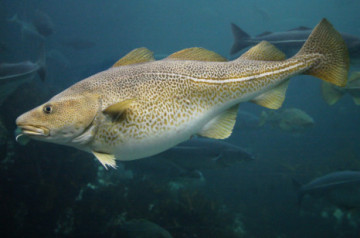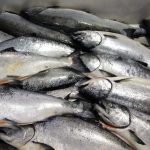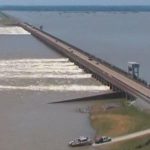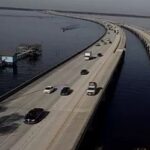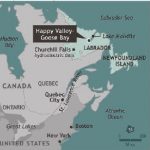Daily Archives: July 13, 2019
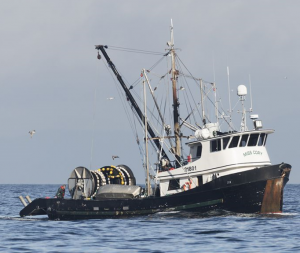
Opinion: Federal fisheries committee challenges B.C. licensing policies
With a sole focus on protecting fish stocks, since the mid-1990s Fisheries and Oceans Canada has largely ignored the economic well-being of B.C.’s commercial fish harvesters and coastal communities. Something really extraordinary just happened. Someone in the government of Canada started paying attention to the B.C. fishery. Not just to the fish in the water, but to the 2,400 small- and medium-sized businesses that employ more than 5,000 fish harvesters to deliver high-value seafood products to local and global markets and sustain B.C.’s coastal communities and First Nations. >click to read< 21:52

State invests in Puget Sound salmon habitat
More than $45 million in grants were awarded to communities throughout Puget Sound to support salmon habitat restoration projects — including more than $333,000 to San Juan County. The Washington State Salmon Recovery Funding Board, in partnership with the Puget Sound Partnership, awarded Friends of the San Juans three grants on Monday, July 8.,, The first grant is for $199,884 to protect herring spawning habitat around the islands. Herring are one of the two species of fish on which salmon prey. >click to read< 15:30
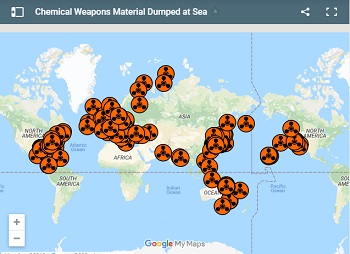
What lies beneath: Gulf of Mexico likely holds tons of discarded military munitions
Today, questions remain as to exactly where those munitions are off the U.S. coastlines, what their condition might be, what dangers they might pose, and whether or not it makes sense to attempt to recover them for land-based disposal.,, Dumped from barges or sent to the bottom aboard scuttled ships, estimates are that millions of pounds of military munitions — unexploded 250-, 500- and 1,000-pound bombs, land mines, mustard gas and other chemical weapons, including munitions confiscated from Nazi Germany and elsewhere following World War II — were sunk off the eastern seaboard of the United States, around the Gulf of Mexico and off the coasts of the Hawaiian islands. Records of the dumped munitions, if kept at all, are scarce. Some likely are inaccurate. Some likely were destroyed. >click to read< 15:11
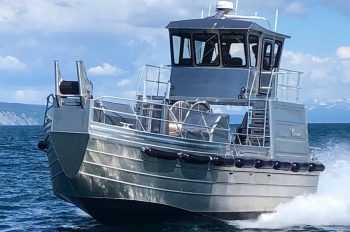
Bristol Bay’s 40-knot netter
They recently sea trialled Bryan Mcmahan’s Esa Ruth, the first of their latest pair of Bristol Bay boats that will be turning some heads on the Bay during this Summer’s sockeye season. The boat’s 40-knot speed will stand out among the crowd of fast boats. But it will be their innovative design that is set to attract attention. Rather than the conventional forward cabin-design, these two craft have the cabin set aft on a raised platform that allows flexibility in handling the salmon gillnet. >click to read< 12:38
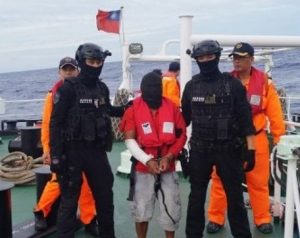
Fishing Boat’s Chief Mate Charged With Killing Eight Crewmembers
Early this year, the suspect was serving as the chief mate aboard the tuna fishing vessel Wen Peng on a voyage in the Indian Ocean. On February 20, while the boat was operating off Mauritius, the mate was involved in a verbal altercation with some of the crewmembers over their work. He then stabbed and killed one Philippine crewmember, then a second, prompting eight additional members of the crew to jump over the side to escape. Two of those who went over the side were rescued by another vessel; six others are missing and presumed dead. In total, three Philippine nationals and five Indonesians died in the fight. >click to read<12:08

Vineyard Wind project lands in rough waters
The project, jointly owned by Avangrid and Copenhagen Infrastructure Partners, had seemed to be gathering permits the way a kid gathers shells on the beach. One after another, the developer added them to the bucket. Then the snag: The Edgartown Conservation Commission on Wednesday denied an underwater cable route off the town’s coastline, citing the potential disturbance to marine habitats and other conflicts. (Local fishermen weren’t happy, either.) On Friday, Vineyard Wind vowed to get a “superseding order” from the state Department of Environmental Protection – a more sympathetic venue – that would overturn the commission vote. More trouble lurks: Vineyard Wind also disclosed that the US Department of Interior’s Bureau of Ocean Energy Management would not issue a crucial permit, as expected, this week,,, >click to read<10:43

Developer: We won’t pursue wind farm in waters off Hamptons
The developer of one of the largest of three proposed wind farms contemplated for the waters off the Hamptons has withdrawn its tentative plan in favor of sites to the west, and is urging the federal government to restrict turbines from East End waters, according to the Germany-based developer’s top U.S. official.,, Bill White, managing director of East Wind LLC, a subsidiary of EnBW Energie Baden-Württemberg AG, said Friday the decision to withdraw and recommend against development off the Hamptons was primarily related to concerns about impacts on fishing. >click to read<10:08
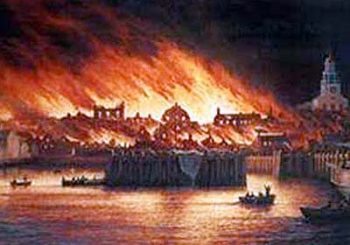
On this Day: July 13 – 1846: Burning whale oil created “a sea of fire” nearly wipes out Nantucket
On this day in 1846, a fire began in a hat store on Nantucket’s Main Street. In no time, it raced through town, consuming everything in its path. Barrels of whale oil were stored on the wharves; when the fire reached them, they burst into flames. The burning oil flowed into the water, creating what one man described as “a sea of fire.” Seven hours later most of the town’s commercial area lay in ashes. Some 250 buildings had been destroyed – almost all the markets and shops, seven factories that processed whale oil, a dozen warehouses, three of the town’s four wharves, and many homes. The fire had lasting consequences: it contributed to the demise of Nantucket as the world capital of the whaling industry. >click to read< 09:10






